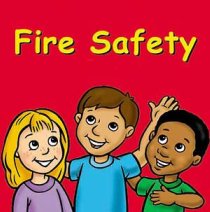Child Safety Tips for Fire
Every child in the world is interested in fire.
It's a given that the way in which a lighter or matches works will make them curious about the use of matches and about how fire works. It's also a given that we don't want to dampen the curiosity of children or to use a heavy hand because in many cases this simply gives them a greater interest in the source of what we've denied them.
Making a federal case of our kids being interested in fire is probably not in your best interests, but making a big deal out of the fire is certainly not either. Keep matches, lighters, and other sources of fire making materials well away from your children.
Make it a point that they are not available for the child to access. A natural curiosity will compel them to see how these things work if they are available.

Some children seem to be unnaturally interested in fire when the reality is that it may be simply an active child who is curious about anything at all. These kids simply need to be protected from themselves by keeping all sources of fire materials out of their hands and out of their reach.
No product is completely child proof. Sadly, that is the reality. There is no type of lighter or matches that can not be used by some child. The fact is that putting them away and keeping them away is your responsibility.
Kids who are as young as two years old have played with matches or lighters and struck them to begin a fire. It sounds hard to believe but the youngest child known to have started a fire by playing with matches was about a month past his second birthday.
Fire Safety Tips at Home
There should be a smoke alarm installed near the areas where the bedroom is in every household.
Children should be taught about the sound that a fire alarm makes and what to do in the event that they hear one.
-
Family fire drills should be done about monthly so that your children are well aware of what to do in the event of a fire and how to react.
-
Evacuation and a meeting place should be laid out in advance and everyone knows exactly what to do if a fire ever does take place.
-
Your children should be taught to take care of their electrical appliances. If a cord is frayed or any electrical thing is ever not working it should be removed from the child and replaced immediately.
-
Inspect your home regularly for fire hazards and when you do, let your children come with you, explaining to them which things are hazardous and which are not.
-
Watch your home for evidence of any kind of play with matches or of fire. Keep an eye out for burned matches, for lighters which are out of place, for clothing or paper or other items that may smell smoky or be burned.
Lighters, matches, candles or smoking items found in a child's room are fire hazards that need to be questioned. Talk to your child very calmly and very reassuringly about fire and fire hazards. Let them know that you're going to be there to keep them secure but there are things they can to do assure that they stay safe as well.
Let them know the reasons why you ask them not to play matches. Explain about the hazards and offer them explanations for the reason why things like lighters and matches are not available to them.
If you suspect that your child is playing with matches of fire, sit them down and talk to them immediately about the hazards and about what can happen. If you think that your child has been playing with fire of any type, discuss it calmly, but if it appears that their curiosity is unnatural in any way, then seek out some good counseling for your child.
Keeping our kids safe and in the know about how to prevent fires may be the one thing that prevents a home fire in your house. Fire safety tips for children are an important part of their overall education.
Fire Safety Tips for Kids
Hurricane Safety Tips
Tornado Safety Tips
Home Fire Alarms Tips


